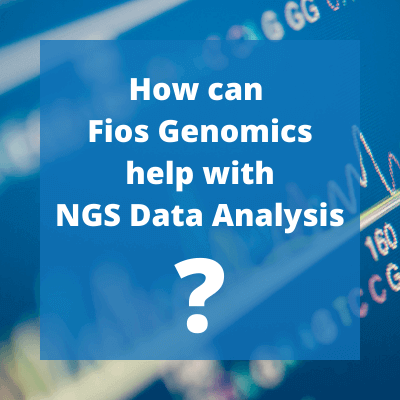NGS Data Analysis
- 23rd March 2022
- Posted by: Breige McBride
- Category: Uncategorised

Making sense of Next Generation Sequencing (NGS) data is challenging, which is why bioinformatics includes NGS data analysis as a specialised field. Here we discuss the challenges of NGS data analysis and how bioinformatics approaches can resolve these.
The Challenges of NGS Data Analysis
NGS is used to figure out the order of nucleotides, either within an entire genome or within a specific region of DNA or RNA. Since NGS allows you to generate sequencing data on a genomic scale; NGS technologies produce massive datasets. This is the first challenge of NGS data analysis – the volume of data. A single NGS data set from one experiment can be terabytes of data. In order to deal with such volumes of data, you need significant computational resources. Adequate computational resources for NGS data analysis can be costly to set up and maintain. Therefore, the investment required may only make sense if you use next-generation sequencing data often, and you have the in-house expertise to analyse it.
In fact, expertise is the second challenge of NGS data analysis. First of all, you need to know how to properly extract and process NGS data for analysis. Then, you need to be able to interpret the data. This is where bioinformatics comes in. Bioinformatics approaches are required to reveal the biologically relevant insights within NGS data. If you do not process an NGS data set in the correct manner, you may find it extremely challenging to extract any biologically relevant insights from the data.
Another challenge with NGS data analysis is the amount of technology platforms available for data generation. Illumina, Thermo Fisher Scientific, PacBio and Roche are just some of the companies offering NGS platforms. While you may be comfortable analysing data from one or two familiar platforms, it is likely you will run into challenges when data comes from a platform you are unfamiliar with. For example, you may have experience with handling short-read NGS data from an Illumina platform; but would be unsure how to ensure accuracy or interpret long-read data from a PacBio platform.
We can help with different NGS datatypes
At Fios Genomics, we can extract, process and analyse data from all of the major short-read and long-read NGS technology platforms. In fact, we are specialists in NGS data analysis and have great experience in a variety of applications such as:
- Genome-wide association studies (GWAS),
- Whole-genome sequencing (WGS) analysis,
- SNP detection and haplotype analysis to facilitate the discovery and/or typing of SNPs implicated in disease
- RNA-Seq data analysis: whole transcriptome analysis for differential gene analysis
- ChIP-Seq data analysis, for analysing interactions in DNA-protein
- Methyl-Seq data analysis: Bisulfite sequencing analysis for epigenetic studies
- Exome analysis for the identification of known and novel SNPs and indels etc.
- CNV analysis
No matter what NGS platform you have used or the type of analysis you require, we can help. Contact us now to discuss your project.
Our NGS Data Analysis Expertise
Of course, as a bioinformatics provider that specialises in NGS analyses, we are experts in overcoming all the challenges of NGS data analysis. We have the computational resources to process your data sets; regardless of their size, the platform they were generated from, or how many data sets you have. Also, since our bioinformatics team come from strong backgrounds in biology, we can identify and understand the biological insights your data contains. You can learn more about our experience and expertise in the video below. Also, you can view our client publications for research projects which included our NGS analyses.
Author: Breige McBride, Content and Social Media Manager, Fios Genomics
Reviewed by Fios Genomics Bioinformatics Experts to ensure accuracy
See Also:
Predictions for Bioinformatics in 2022
TGFβ attenuates tumour response to PD-L1 blockade by contributing to exclusion of T cells
(This is a paper published in Nature – Fios provided RNA-Seq Data Analysis for this project with Genentech)
What does a Bioinformatics Report look like?
Genomic Sequencing Cost Timeline
Download RNASeq Data Analysis Report
Fill in the form below to access the data analysis report our team created. Here, bioinformatics analysis of publicly available RNA sequencing (RNASeq) datasets helped to identify genes and pathways associated with psoriasis and the response of psoriatic skin to modulation of the AhR.
Leave a Reply
You must be logged in to post a comment.

